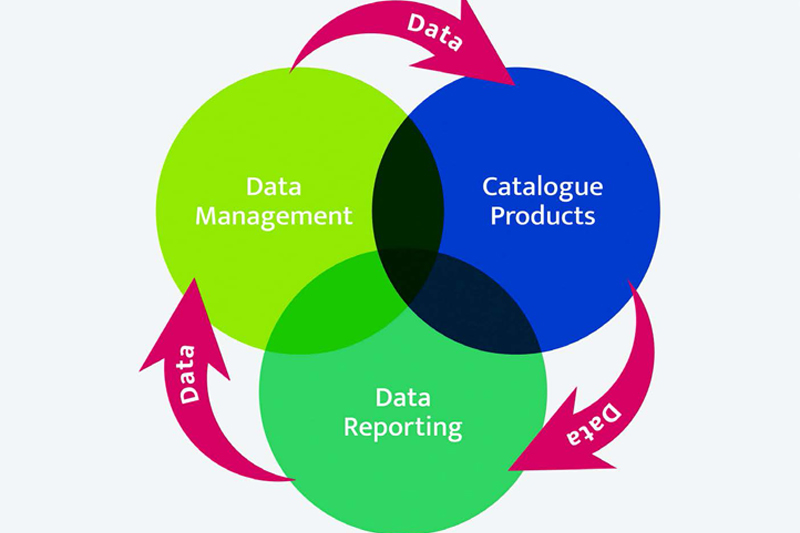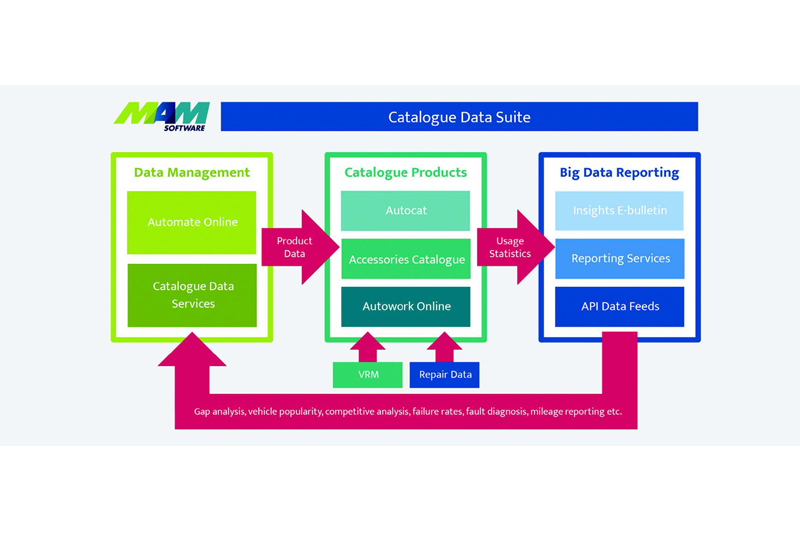
Motor factors are up against shifting marketing conditions, and the need to stay ahead of the competition is greater than ever. Using ‘big data’ can help, but processing it isn’t easy for most businesses, which is why analytical tools and services are imperative. MAM Software discusses how its latest solution will give the aftermarket a valuable insight into parts lookup and fitment trends.
Factors that use big data analytics throughout their supply chain are well-positioned for success, not least because they can analyse market conditions, see where product needs are changing, and recognise new business opportunities. MAM’s big data offering brings together historical data and predictive analytics to give factors the tools they need to thrive in today’s market.
What is big data?
Factors deal with vast amounts of data on a daily basis, but it is the sheer volume, velocity and variety of this information that defines it as ‘big’. This is a concept that has been around for some time, but it’s only recently that its potential has been fully recognised.
MAM Software has compiled its data anonymously from thousands of users accessing its Autocat catalogue and Autowork Online garage management software.
Analysing this data will provide valuable insights into two core areas of the aftermarket: parts lookups and fitment trends. Factors can use the information to find out more about the performance of certain products and where improvements can be made.

Why should big data matter to factors?
Big data and analytics can give factors a competitive advantage. This is especially true at a time when the concept of big data is still new to many companies, meaning they don’t have the tools in place to make the most of the opportunities it offers.
One of the most valuable pieces of data for factors is knowing where – and how well – their products are performing. The ability to identify regional trends can suggest where certain parts are in the highest demand, and therefore where stock needs to be kept at optimum levels.
Through its new data service, MAM is able to illustrate the best-selling regions for specific parts, and equally as important, regions where parts aren’t selling, as there is little point holding them in stock.
Factors can see where opportunities for sales have previously been missed, which can help to avoid sales being lost in the future due to a lack of part availability. Tracking seasonal trends in sales and returns is also possible, which further enables better planning of stock.

Ensuring customer satisfaction
Big data analytics helps the aftermarket better understand the buying behaviour, preferences and requirements of their customers. Accessing this level of detail enables factors to tailor their service, which in turn can increase revenue and improve customer satisfaction.
For example, analysis of historic trends can be used to predict the failure rates of specific parts. MAM’s data is capable of indicating the probability of a replacement or repair when a vehicle arrives at a garage with a given mileage.
This information can make garages – and their factors – more efficient by helping to diagnose faults more quickly. Having a list of the most commonlyidentified faults on a vehicle at a specific mileage will mean a technician can prioritise checking these areas, while factors can prepare parts for dispatch.
Big data can help guide the user towards a more efficient resolution to the job at hand, ultimately saving time and improving efficiency throughout the supply chain.
The MAM approach to big data
MAM is launching its big data service with a free monthly ‘Insights’ ebulletin, which will show key performance indicators from across the industry.
Companies that require more detailed information will be able to purchase bespoke reports for in-depth monitoring, trend analysis, reporting and analytics. A data feed service will also allow subscribers to manipulate and analyse data in third-party tools.







